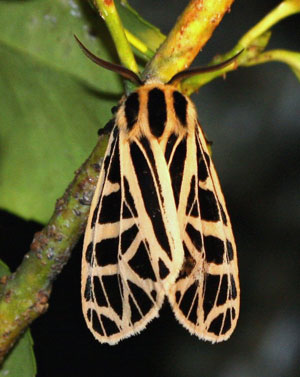 The tiny culprit: The tiger moth
Following scientific determination that Tiger moth, or Asota caricae, is responsible for unexplained fevers, researchers in Kerala state have begun developing a kit capable of quickly diagnosing lepidopterism, a disease caused by moth allergens.
The tiny culprit: The tiger moth
Following scientific determination that Tiger moth, or Asota caricae, is responsible for unexplained fevers, researchers in Kerala state have begun developing a kit capable of quickly diagnosing lepidopterism, a disease caused by moth allergens.
“A provisional patent for the detection of Tiger moth-specific immunoglobulin E (IgE) allergens has already been filed and as soon as the standardisation procedure is complete, we will go for full patent filing,” says Karthikeya Varma, director of the Aster-Malabar Institute of Medical Sciences (Aster-MIMS) Research Foundation, Kozhikode.
It was a study conducted by a team of researchers at Aster– MIMS, published April in PLoS One, that showed the close association between proliferation of Tiger moth allergens and fever outbreaks. The study also showed that the moth allergens are usually not taken into account in Kerala, with patients getting erroneously treated for infectious fevers such as dengue and chikungunya.
Pallara Janardhanan Wills, senior scientist and lead author of the study, said delay in proper clinical treatment of lepidopterism often complicated related conditions like platelet drop, respiratory disorders, meconium aspiration syndrome and hepatic and renal failure.
“Without specific diagnosis, the actual, underlying disease can go undetected, often resulting in acute, and even fatal, respiratory problems. In Kerala, these cases occur from June to August during monsoon season when moths flock to artificial lights,” Wills tells SciDev.Net.
The new ELISA-based test kit will address this problem when used for detection of Tiger moth disease in all Aster hospitals in India, says Varma. “We will also present our data to health authorities in Kerala and at the central government so that they can take steps to control Tiger moth lepidopterism with the help of our diagnostic kit,” he says.
A. caricae is found in the Indo-Australian tropics up to Vanuatu, and its caterpillars are known to produce severe itching, especially amongchildren, the elderly and diabetics. Anjana Mohan, a medical scientist at Aster- MIMS, said often fever and joint pain precede itching and blotchy red rashes.
The study, using animal models, found body fluids and chitinous scales ofA. caricae to be highly toxic and inflammatory in nature. Wistar rats exposed to live Tiger moths developed clinico-pathological complications similar to those reported during fever outbreaks.
Analysing the unique relationship between Tiger moth caterpillar abundance and the incidence of epidemics and meteorological conditions, T.V. Sajeev, head of entomology at the Kerala Forest Research Institute, Thrissur, said new research was needed for public health authorities to effectively tackle the seasonal outbreaks.
Aster-MIMS has already started a newly approved protocol for the treatment of Tiger moth disease. Infectious fever cases are evaluated for moth allergens by western blot analysis. Positive cases are treated with antihistamines and, in severe cases, corticosteroids, Varma says.
This article was originally published by SciDevNet under a CC-BY licence

Rate and Review
Rate this article
Review this article
Log into OpenLearn to leave reviews and join in the conversation.
Article reviews